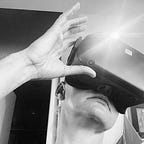A Practical Guide for Including VR at Events
From trade shows to arts festivals, more brands and organizers are looking to incorporate virtual reality than ever before. But successfully pulling off a large public showing of a VR experience takes a lot more than simply building a piece and renting a few headsets and computers. If done right, VR demos at events can drive conversation and conversion and provide a great way to set your booth apart. Done wrong, it can create major headaches and a negative impression.
The first and most important question you should consider as you start thinking about whether you want to include VR is the intention of the demo. Why are you creating a VR piece as opposed to another type of promotional content, and what story are you trying to tell? Making VR isn’t cheap or easy, and if you don’t have a clear goal in mind, then it can quickly spiral out of control and leave you with a bloated mess of an experience. Are you trying to show off a product, or tell your brand’s origin story? Is the purpose educational or just for entertainment? There are no right or wrong answers, but all those questions need to be raised and answered before moving forward and building anything.
Unless you are demoing at a very technical event where the audience will have a high degree of familiarity with immersive tech, make sure you keep the content as simple as possible. It is likely that many people doing the demo won’t have used VR before, and asking them to do anything complicated will result in frustration. Don’t make them teleport around, for instance, or do anything too complicated — keep the interactivity on the limited side to start with.
Make sure you’re not scaring people, unless that’s what you’re specifically aiming for — and even then, be careful. Scares in VR are a lot more visceral than scary films, and you don’t want to frighten your audience too much. Stay away from any type of fear of heights or walk the plank type experiences, and those will freak people out and likely embarrass them as well. If there is any content that could trigger someone, make sure you warn them ahead of time — it might ruin the surprise, but that’s a lot better than causing someone a lot of emotional pain (trust me, I speak from experience on this one).
From a more practical standpoint, make sure you keep your experience on the shorter side. This will help mitigate long lines and people getting bored and restless in the headset, and also allow the greatest number of people to be part of the experience. Also have a system in place if you do start seeing long lines — there are plenty of restaurant reservation apps you can download, and you get the added bonus of collecting phone numbers and email addresses for future marketing purposes.
Incorporating VR is a great way to make your brand stand out at an event — just make sure that you’re not creating a negative impression by making all the wrong moves.
